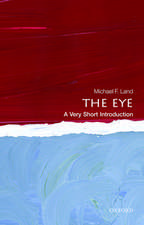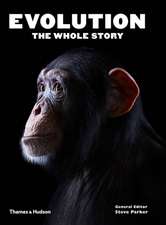Palaeogeography and Palaeobiogeography: Biodiversity in Space and Time: Systematics Association Special Volumes
Editat de Paul Upchurch, Alistair J. McGowan, Claire S.C. Slateren Limba Engleză Paperback – 12 oct 2016
The book covers a range of topics, and reflects some of the major overall questions in the field such as:
- Which approaches are best suited to reconstructing biogeographic histories under a range of circumstances?
- How do we maximize the use of organismal and earth sciences data to improve our understanding of events in earth history?
- How well do analytical techniques devised for researching the biogeography of extant organisms perform in the fossil record?
- Can alternative biodiversity metrics, particularly those based on morphological measurements, enhance our understanding of biogeographic patterns and processes?
| Toate formatele și edițiile | Preț | Express |
|---|---|---|
| Paperback (1) | 469.34 lei 6-8 săpt. | |
| CRC Press – 12 oct 2016 | 469.34 lei 6-8 săpt. | |
| Hardback (1) | 1109.99 lei 6-8 săpt. | |
| CRC Press – 24 oct 2011 | 1109.99 lei 6-8 săpt. |
Preț: 469.34 lei
Nou
Puncte Express: 704
Preț estimativ în valută:
89.81€ • 94.02$ • 74.31£
89.81€ • 94.02$ • 74.31£
Carte tipărită la comandă
Livrare economică 05-19 aprilie
Preluare comenzi: 021 569.72.76
Specificații
ISBN-13: 9781138198913
ISBN-10: 1138198919
Pagini: 240
Ilustrații: 74
Dimensiuni: 156 x 234 x 17 mm
Greutate: 0.45 kg
Ediția:1
Editura: CRC Press
Colecția CRC Press
Seria Systematics Association Special Volumes
Locul publicării:Boca Raton, United States
ISBN-10: 1138198919
Pagini: 240
Ilustrații: 74
Dimensiuni: 156 x 234 x 17 mm
Greutate: 0.45 kg
Ediția:1
Editura: CRC Press
Colecția CRC Press
Seria Systematics Association Special Volumes
Locul publicării:Boca Raton, United States
Public țintă
ProfessionalCuprins
Biogeographical Convergence and Time-Slicing: Concepts and Methods in Comparative Biogeography. Phylogenetic Methods in Palaeobiogeography: Changing from Simplicity to Complexity Without Losing Parsimony. Uncertainties in Phanerozoic Global Continental Reconstructions and Their Biogeographical Implications: A Review. Boundaries and Barriers of North American Warm Deserts: An Evolutionary Perspective. Integrating GIS and Phylogenetic Biogeography to Assess Species-Level Biogeographic Patterns: A Case Study of Late Devonian Faunal Dynamics. A Case Study of the Palaeobiogeography of Early Mesozoic Actinopterygians: The Family Ptycholepidae. Disparity as a Complement to Taxonomy and Phylogeny in Biogeographic Studies: Present and Past Examples from the Cephalopods.
Notă biografică
Dr. Paul Upchurch is Reader in Palaeobiology at the Department of Earth Sciences, UCL. Having obtained a Ph.D. in vertebrate palaeontology from Cambridge in 1994, he used a series of fellowships from Sidney Sussex College (Cambridge), The Leverhulme Trust, and the NERC to develop his interest in historical biogeography. In particular, he has focused on the role that fossils can play in providing information on the timing and nature of biogeographic events such as vicariance and dispersal. Dr. Upchurch joined UCL in 2003 and has subsequently carried out research on dinosaur evolution, particularly with regard to their phylogenetic relationships and diversity patterns. At present he is working on a different, but related, aspect of deep time spatial distributions: latitudinal biodiversity gradients amongst terrestrial animals during the Cretaceous Period.
Dr. Alistair J. McGowan, FGS is currently based in the School of Geographical and Earth Sciences, University of Glasgow, funded by a Royal Society of Edinburgh/Scottish Government Postdoctoral Fellowship co-funded by Marie Curie Actions. He commenced his academic career as a geologist upon graduating from the University of Glasgow in Geology and Applied Geology in 1994. After three years of assorted jobs, including rebuilding a wooden boat in the most remote peninsula on mainland Scotland, mountain footpath construction, and streetsweeping, he returned to academia in 1997 to study for a M.Sc. in Palaeobiology at the University of Bristol, where his interests in quantitative palaeobiology were able to develop. This led to five years in the Department of Geophysical Sciences at the University of Chicago, where he completed his Ph.D. in 2003. Hence, although he is 39, he is only 34 in UK postdoc years. After a short spell at the Smithsonian National Museum of Natural History, he returned to the UK to work with Paul Upchurch at UCL on a biogeographic simulation project as a research associate. This formative period cemented his interest exploring biodiversity in all four dimensions. He is also a Fellow of the British Trust for Ornithology and his voluntary work on bird surveys has been important in developing his ideas about sampling problems and biases in the fossil record, as well as straddling the divide between ecological and historical biogeography.
Dr. Claire S. C. Slater completed her undergraduate studies in natural sciences, specializing into geological sciences, in 2002 at the University of Cambridge. She completed a M.Sc. at the Natural History Museum and Imperial College in London. She then returned to Trinity College, University of Cambridge, to commence her Ph.D. in 2003. It was during her Ph.D. that she had the great pleasure of being involved with co-organising (with Alistair J. McGowan and Paul Upchurch) the conference from which this book stemmed. She is currently pursuing a career in law but retains an enduring interest in palaeontology, biogeography, and the sciences.
Dr. Alistair J. McGowan, FGS is currently based in the School of Geographical and Earth Sciences, University of Glasgow, funded by a Royal Society of Edinburgh/Scottish Government Postdoctoral Fellowship co-funded by Marie Curie Actions. He commenced his academic career as a geologist upon graduating from the University of Glasgow in Geology and Applied Geology in 1994. After three years of assorted jobs, including rebuilding a wooden boat in the most remote peninsula on mainland Scotland, mountain footpath construction, and streetsweeping, he returned to academia in 1997 to study for a M.Sc. in Palaeobiology at the University of Bristol, where his interests in quantitative palaeobiology were able to develop. This led to five years in the Department of Geophysical Sciences at the University of Chicago, where he completed his Ph.D. in 2003. Hence, although he is 39, he is only 34 in UK postdoc years. After a short spell at the Smithsonian National Museum of Natural History, he returned to the UK to work with Paul Upchurch at UCL on a biogeographic simulation project as a research associate. This formative period cemented his interest exploring biodiversity in all four dimensions. He is also a Fellow of the British Trust for Ornithology and his voluntary work on bird surveys has been important in developing his ideas about sampling problems and biases in the fossil record, as well as straddling the divide between ecological and historical biogeography.
Dr. Claire S. C. Slater completed her undergraduate studies in natural sciences, specializing into geological sciences, in 2002 at the University of Cambridge. She completed a M.Sc. at the Natural History Museum and Imperial College in London. She then returned to Trinity College, University of Cambridge, to commence her Ph.D. in 2003. It was during her Ph.D. that she had the great pleasure of being involved with co-organising (with Alistair J. McGowan and Paul Upchurch) the conference from which this book stemmed. She is currently pursuing a career in law but retains an enduring interest in palaeontology, biogeography, and the sciences.
Descriere
Based on contributions from eminent experts in both fields, this book bridges the gap between palaeogeographers and palaeobiogeographers, two communities of researchers who work on the same issues but typically use different types of data. It emphasises the availability and use of electronic resources and analytical software. It also covers the burgeoning array of software packages that store and manipulate spatial data, allow palaeogeographic maps to be drawn and used to plot spatial distributions, and utilise analytical methods that reconstruct the biogeographic histories of taxa.
























